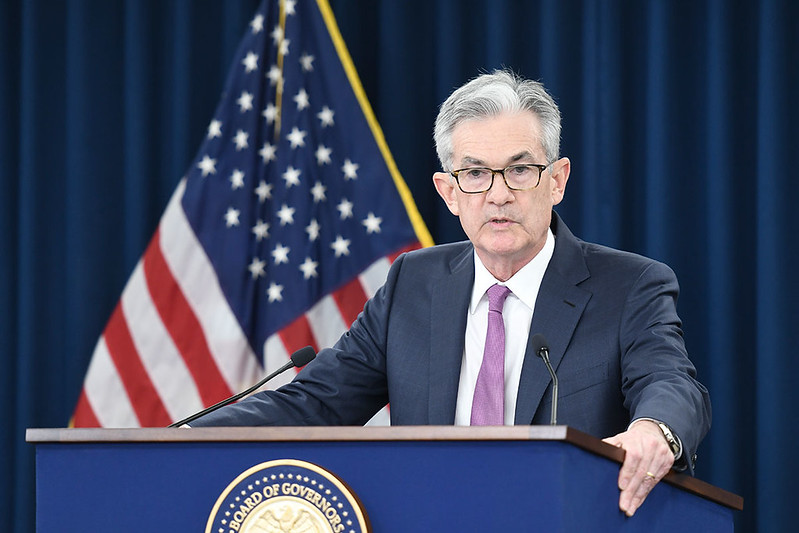
(Photo : Flickr)
US Federal Reserve chief Powell
- The US Federal Reserve's September policy meeting revealed a division over the size of the rate cut.
- The decision to cut rates by 50 basis points was seen as a cautious approach to maintaining economic momentum.
- The market's reactions were mixed, and the robust US labor market performance complicated the Fed's decision-making.
- The rate cut could benefit small businesses by reducing borrowing costs, but the long-term effects remain uncertain.
The US Federal Reserve's recent policy meeting revealed a division among officials over the size of the rate cut. The minutes of the Fed's September 17-18 meeting showed that some officials believed a 25 basis point cut would align with a gradual approach, allowing the Fed to assess the impact of policy on the economy.
Others felt a more substantial 50 basis point cut was necessary to address the then-current economic conditions, which included somewhat elevated inflation and a still solid economic growth with low unemployment.
The decision to cut rates by half a percentage point indicated a cautious approach to maintaining economic momentum amidst these conditions. This cut marked the first in over four years and was seen as a response to potential economic headwinds, signaling the start of an easing cycle.
The key figures in the Federal Reserve's decision-making process regarding the September rate cut were the members of the Federal Open Market Committee (FOMC), particularly Chair Jerome Powell.
Among the FOMC members, Michelle W. Bowman was notable for dissenting, preferring a 25 basis point cut instead of the 50 basis point reduction that the majority voted for. This division among the officials added an element of uncertainty to future rate decisions.
Market Reaction and Labor Market Performance
The market's initial reactions to the Fed's decision to cut rates by 50 basis points were mixed. The US dollar strengthened against the Japanese Yen, and Treasury yields rose, indicating that traders were adjusting their expectations for future rate adjustments.
Stocks had an up-and-down session, with the initial response not uniformly positive, suggesting that the market was digesting the implications of a divided Fed and the potential for smaller, more measured rate cuts in the future.
The US labor market around the time of the September rate cut performed robustly, with employers adding 254,000 jobs in September. The unemployment rate dropped to 4.1%, indicating a steady and healthy labor market. This performance suggested that despite the Fed's decision to cut rates, possibly due to concerns about inflation or global economic uncertainties, the domestic job market remained strong.
The solid labor market conditions were a positive signal for the economy, reflecting continued growth and a low unemployment rate, which is generally associated with economic health. However, it also complicated the Fed's decision-making as they sought to balance the need for economic stimulus with the risk of overheating the job market.
Implications for Small Businesses and Historical Context
The Fed's rate cut had potential positive implications for small businesses in the US. Lower interest rates typically reduce borrowing costs, making it easier and less expensive for small businesses to access capital through loans. This could lead to increased lending appetite among traditional lenders, which would mean more small businesses could secure financing for investments or operations. Reduced interest payments could also free up cash flow for these businesses.
Historically, the Federal Reserve has used interest rate cuts as a tool to stimulate the economy during periods of slowdown or recession. For instance, during the 2008 financial crisis, the Fed cut rates to near zero to boost economic activity. However, the current situation is different as the economy is not in a recession, but the rate cut is seen as a preventive measure to protect the economy from potential headwinds.
This approach, known as a mid-cycle adjustment, was last seen in the 1990s when the Fed made a series of rate cuts to prolong the economic expansion.









